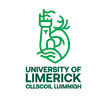Analysis: In addition to genetic factors, non-genetic factors influence how an embryo develops, including how its brain develops
In the early 17th century, French physician and poet Claude Quillet (1602-1661) wrote in his book on "Callipaedie" (an art how to have handsome children):
"Ye pregnant wives, whose Wish it is, and Care,
To bring your Issue, and to breed it fair,
On what you look, on what you think, beware!"
These lines convey the belief that "maternal impressions" can have a lasting and severe effect on the developing embryo. For example, being frightened by a cat, fish, dog, rabbit, etc., during pregnancy was believed to result in a malformed child resembling the frightening object. Still, in the early 1800s, it was common practice among noble ladies in Paris to have themselves wheeled around in the Louvre in easy chairs during pregnancy to gaze at beautiful people in the paintings they wished their future children to resemble.
Emotions, too, were believed to be "impressed" on the baby. Paracelsus (~1493-1541) advised that pregnant women should live morally and be careful with their thoughts since their imagination will shape the developing baby. It was believed that if a woman was sorrowful during pregnancy, the child would later develop into a person with what we would diagnose today as depression.
We need your consent to load this rte-player contentWe use rte-player to manage extra content that can set cookies on your device and collect data about your activity. Please review their details and accept them to load the content.Manage Preferences
From RTÉ Radio 1's Today with Claire Byrne, Neuroscientist and psychologist Dr Sabina Brennan on ways to keep our brains healthy
This very early theory of environmental influence on our offspring's development and health was disproved, and after the year 1860, it received little support from serious scientists. However, there is some truth in the concept of maternal impressions as we know nowadays. The developing embryo is indeed affected by the environment it is exposed to in the mother's womb. That means that besides genetic factors, non-genetic factors influence how the embryo develops, including how its brain develops. These environmental factors can affect the behaviour and mental well-being of the offspring until late in life.
In the past, the discussion of whether nature (our genes) or nurture (our environment) is responsible for developing brain disorders has been fiercely debated. Many arguments could have been avoided by acknowledging that the two are not mutually exclusive. However, even today, there remains a common misperception that there are "genes for" complex disorders. In contrast, in most cases, a combination of genes and specific environmental factors determine the risk of developing these disorders.
We need your consent to load this rte-player contentWe use rte-player to manage extra content that can set cookies on your device and collect data about your activity. Please review their details and accept them to load the content.Manage Preferences
From RTÉ Brainstorm, What happens inside an infant's brain?
In reality, we have a genetic setup that sets boundaries to what we can do, how we behave, whether we get sick often or not, whether we are tall, energetic, intelligent, and much more. These boundaries can be set very narrowly, with the environment only able to push a trait a little. But sometimes, the environment has a significant influence, and it may even decide whether or not the potential for something that lies in our genes is awakened.
Today, brain development and function research is on the verge of identifying the mechanisms by which genes and the environment interact to affect behaviour and understanding complex disorders likely caused by multiple genes of small effect interacting with each other and the environment.
For example, dietary factors such as zinc deficiency, stress, infections, exposure to pesticides, certain drugs, and toxins during pregnancy have been convincingly linked to the risk of babies developing neurodevelopmental disorders such as Autism Spectrum Disorders. But also later in life, diet, cognitive training, or physical activity may determine how healthy our brain ages.
We need your consent to load this rte-player contentWe use rte-player to manage extra content that can set cookies on your device and collect data about your activity. Please review their details and accept them to load the content.Manage Preferences
From RTÉ Radio 1's Brendan O'Connor Show, geneticist and epidemiologist Professor Tim Spector on why and how we should feed our microbiome
The intestinal microbiome, the community of microbes living in our gut, significantly impacts brain health. It influences the production of metabolites and neurotransmitters. It interacts with the immune system, regulating inflammation, which can affect brain development and function. An imbalance in the microbiome has been linked to conditions like depression, Autism Spectrum Disorders, and neurodegenerative diseases, including Alzheimer's Disease. Gut health is heavily influenced by environmental factors. However, gut-brain signalling is only one way environmental factors can shape our brains. Countless more mechanisms are at play, and many are likely still unknown.
As humans, we can selectively manipulate our environment; this should ignite a strong interest in how the environment shapes our brains. Having identified an environmental risk factor, prevention should be easy by avoiding it. Similarly, beneficial environmental factors can be looked for. However, we will need more research to identify those factors and how they affect the brain. To generate intervention opportunities for preventing and treating brain disorders and promoting brain health.
Follow RTÉ Brainstorm on WhatsApp and Instagram for more stories and updates
The views expressed here are those of the author and do not represent or reflect the views of RTÉ


